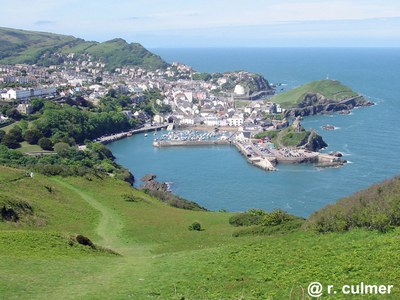5.1.7 North Devon: Conclusions

The Bayesian belief network socio-ecological modelling framework linked with a geospatial database was an innovative way to incorporate information from the ecosystem services assessment and scenarios developed with stakeholders and elaborate spatially representative changes in service provision.
The process was complex and involved many assumptions but these were captured in the process, as was the uncertainty surrounding relationships at each stage
The main limitations were that:
- Three types of ecosystem service associated with subtidal sedimentary habitats were assessed, there are likely to be more but the linkages are harder to quantify and confidence is generally low [Potts et al., 2014].
- The ecosystem service assessment was presented as increases or decreases in service provision and not valued in monetary terms due to the lack of data for full economic assessment.
- Only subtidal sedimentary habitats were assessed and rock habitat types were not considered in this assessment giving a partial picture of the consequences of management scenarios on the North Devon Biosphere Reserve as a whole (subtidal rock habitats comprise 29.5% of the seabed).
- Intertidal and estuarine habitats were not considered in the ecosystem services assessment, which arguably may have high value for cultural services, but this was outside the scope of this project.
- The combined habitat map, used as a base layer for the model and in the ecosystem services assessment, had variable confidence associated with it; some areas of the NDBR have not been subject to recent, detailed surveys and were infilled with modelled data (UKSeaMap). This was at the level of broadscale habitats (EUNIS level 3) and it was not possible to resolve key ecological communities that may show differences in habitat sensitivity to pressures or provision of services leading to a lower confidence in our understanding of ecosystem service provision for certain areas (primarily the western part of the NDBR).
- The fishing activity information used to develop the abrasion layer was based on Finding Sanctuary’s Fishermap. This represents the density of vessels using an area per month. It was used as a proxy for abrasion of the seabed by demersal trawl gear. More detailed information on patterns of fishing activity, trawl paths and the actual footprint on the seabed from demersal trawling would greatly improve our ability to represent the current provision of ecosystem services, and also increase the accuracy of any modelled changes in provision with management interventions.
 The scope of the case study had to be constrained to maintain tractability, but it is clear that the results would be greatly improved from better ecological and socio-economic spatial datasets. However, the application of a spatially linked Bayesian Belief Network is novel and represents a significant advance in the field of socio-ecological modelling and ecosystem services assessment, not least as it was able to combine information of very different types:
The scope of the case study had to be constrained to maintain tractability, but it is clear that the results would be greatly improved from better ecological and socio-economic spatial datasets. However, the application of a spatially linked Bayesian Belief Network is novel and represents a significant advance in the field of socio-ecological modelling and ecosystem services assessment, not least as it was able to combine information of very different types:
- stakeholder derived scenarios
- geospatial records on seabed habitats
- literature derived information on habitat sensitivities to activities, linkages between habitats and ecosystem services provision and pressures linked with human activities
This represents the first application of a spatially representative Bayesian Belief Network to explore ecosystem service delivery in a marine system at a local scale with real world management application.Socio-ecological modelled ecosystem service provision is already being used by managers such as the Inshore Fisheries Conservation Authority and UNESCO Biosphere Reserve Management to inform their activities and will likely contribute to evidence for designation of Tranche 2 rMCZs in the North Devon Biosphere Reserve.

